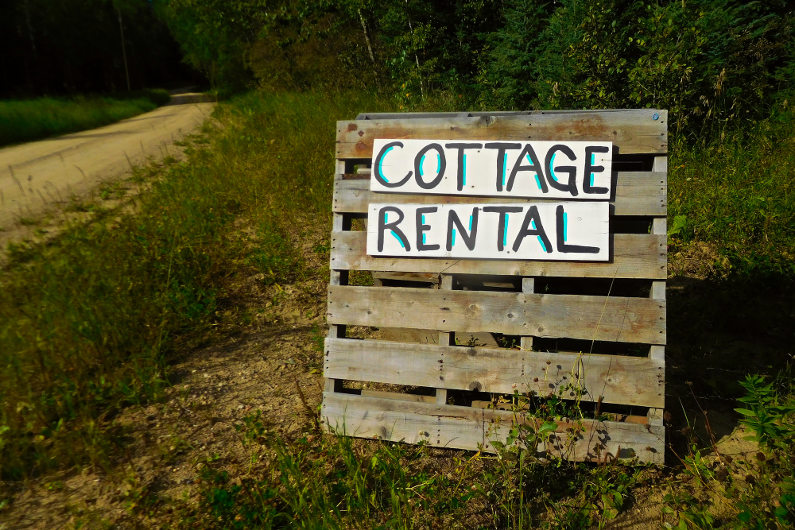Renter’s insurance is a policy that protects tenants from financial losses and liabilities. Some property managers and landlords require insurance in the terms of the lease. The policies are helpful for renters that have children and pets in that they free the tenants of common liabilities. However, renter’s insurance doesn’t cover all risks that a tenant could encounter.
Reviewing seven things covered by renter’s insurance and 3 that are left out explains it all.

What’s Covered by Renter’s Insurance
1. The Renter’s Belongings
The renter’s insurance coverage applies to the renter’s belongings that are inside the property. If the property is damaged, the renter can file a claim for any of their personal belongings that are destroyed in the covered event. The property insurance coverage will not protect the tenant’s belongings. It just applies to the property itself.
Some renter’s policies provide true replacement values for the items, but the policyholder must review the terms of their policy to determine if they have the benefit or if the items are placed into a collective value. If you need renter’s insurance, contact your preferred insurer for a free quote now.
2. Medical Costs for Visitors Who Become Injured
If anyone becomes injured in the rental property, the insurance covers their medical costs. However, the individual must have the legal right to be on or inside the property. For example, it must be someone that the tenant invited to their home or a service provider that must step onto the property to perform their job duties. Trespassers are not covered under the renter’s insurance policy, and the tenant could press charges against the individual for entering the property without just cause.
3. Damage Caused by the Tenant
Any property damage caused by the tenant or their family is covered under the renter’s policy. The tenant can file a claim to get funds to repair the property and reduce their liability. However, most policies require more profound damage to happen. The damage must have been made by the tenant or their children, and it can’t be a result of the landlord’s failures.
For example, a water leak is the responsibility of the landlord, and if they don’t repair it the damage the leak causes are not the tenant’s fault. Any events that are covered under the homeowner’s insurance policy, such as floods, fires, or natural disasters, are managed by the property owner, not the tenant.
4. Dog Attacks Involving the Tenant’s Dog
Dog attacks involving the tenant’s dog present serious liabilities for the tenant. Renter’s insurance pays for the medical expenses for the victim if they didn’t provoke or abuse the animal. Again, the victim must have obtained permission to enter the property or approach the dog. Any criminal act that caused the dog attack eliminates the victim’s rights to coverage.
It is recommended that the tenant review the fine print in the policy. Some of the renter’s insurance policies have restrictions for attacks related to specific dog breeds. The policy might specify a maximum weight for the dog, too.
5. Items Rented by the Tenant and Stored Inside the Property
If the tenant rent items, such as furniture from a local service, the renter’s insurance provides some coverage for the items. The terms of the policy have a clause for any rented items that are in the tenant’s possession at the time of a covered event. Any rented furniture, electronics, or appliances that were damaged are replaced through the policy.
6. Items Stolen While the Tenant is On Vacation
When traveling, the tenant has limited coverage for their belongings when staying in a hotel. The items are replaced if they are stolen during their vacation. It is necessary for the renter to add high-value items to their policy. Some insurers might require an official appraisal for the items to show their exact value. Riders can be added to the policy for this purpose. Reviewing the terms of the policy explains how much coverage is available during a vacation.
7. Any Legal Costs If the Tenant is Sued
Damages from a lawsuit generate serious financial losses for the tenant. Instances in which they could become involved in a lawsuit include slip and fall accidents inside or outside the property or a dog attack. The renter’s insurance policy offers liability coverage that pays out if the tenant loses a legal claim for these reasons.

What Renter’s Insurance Doesn’t Cover:
1. Damage That Wasn’t Caused by the Tenant
Property damage caused by floods is not covered by renter’s insurance. The property owner will need to file a claim for the property damage and schedule repairs themselves. The tenant cannot be held responsible for any property damage they didn’t cause. Most rental property owners add their additional homes to an umbrella policy or purchase dwelling insurance for the rented space.
2. Pest-Related Property Damage
A pest infestation can cause serious damage, but it is not covered under the renter’s insurance policy. The terms of the lease show what party is responsible for pest control. If the landlord provides the services, the tenant must report any damage to the property owner to file an insurance claim. If the tenant is responsible, they could face out-of-pocket costs for repairing the property after the pest infestation is managed.
3. The Tenant’s Vehicle
The tenant’s vehicle is not covered under the renter’s insurance even if the automobile is stored inside a garage on the property. The tenant is responsible for purchasing auto insurance to cover and protect their vehicle. If it is stolen, the auto owner must file a claim through their own vehicle insurance.
Renter’s insurance gives tenants protection against personal injury claims if a visitor falls or is attacked by their dog. It provides replacement funds for any of the occupant’s personal belongings that are damaged, stolen, or lost. The policy offers funds to cover medical expenses for individuals who are injured to mitigate the risk of a lawsuit. It also offers limited protection when the individual travels. Examining what renter’s insurance covers and doesn’t cover educates the individual about what level of protection they need.


